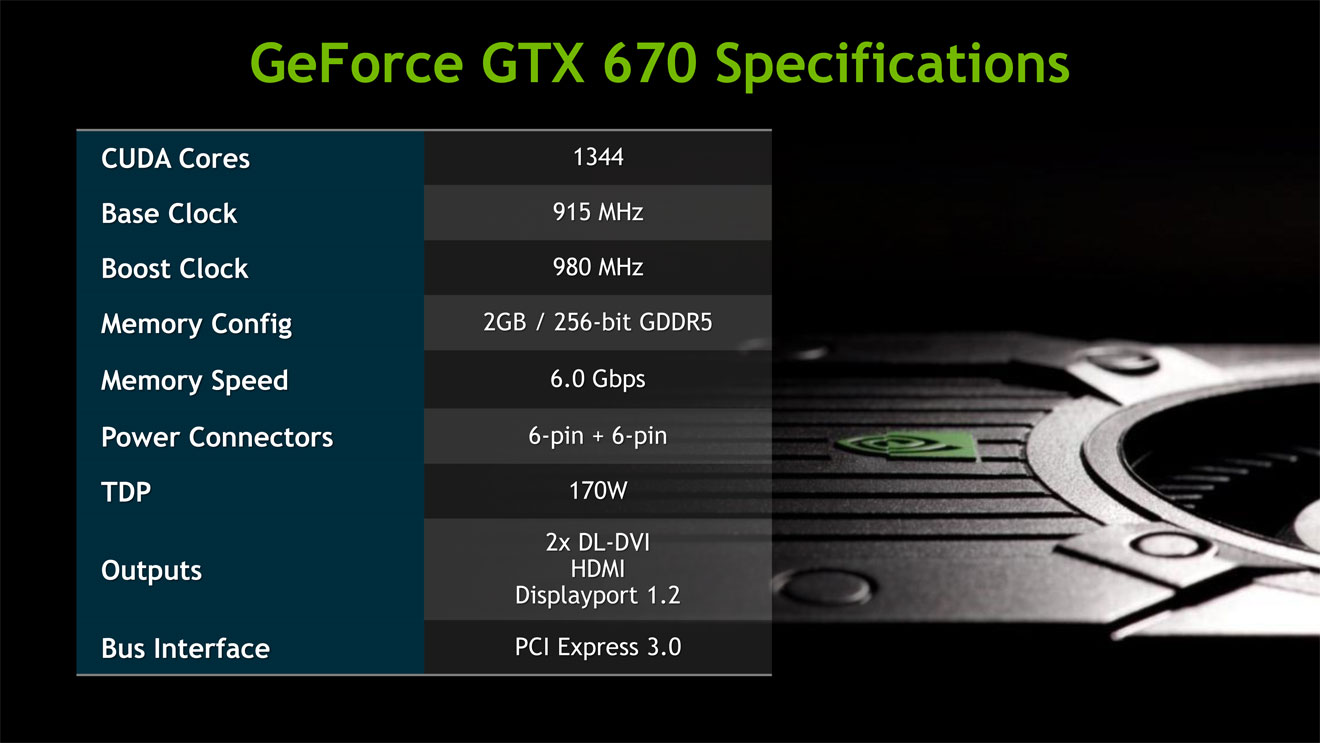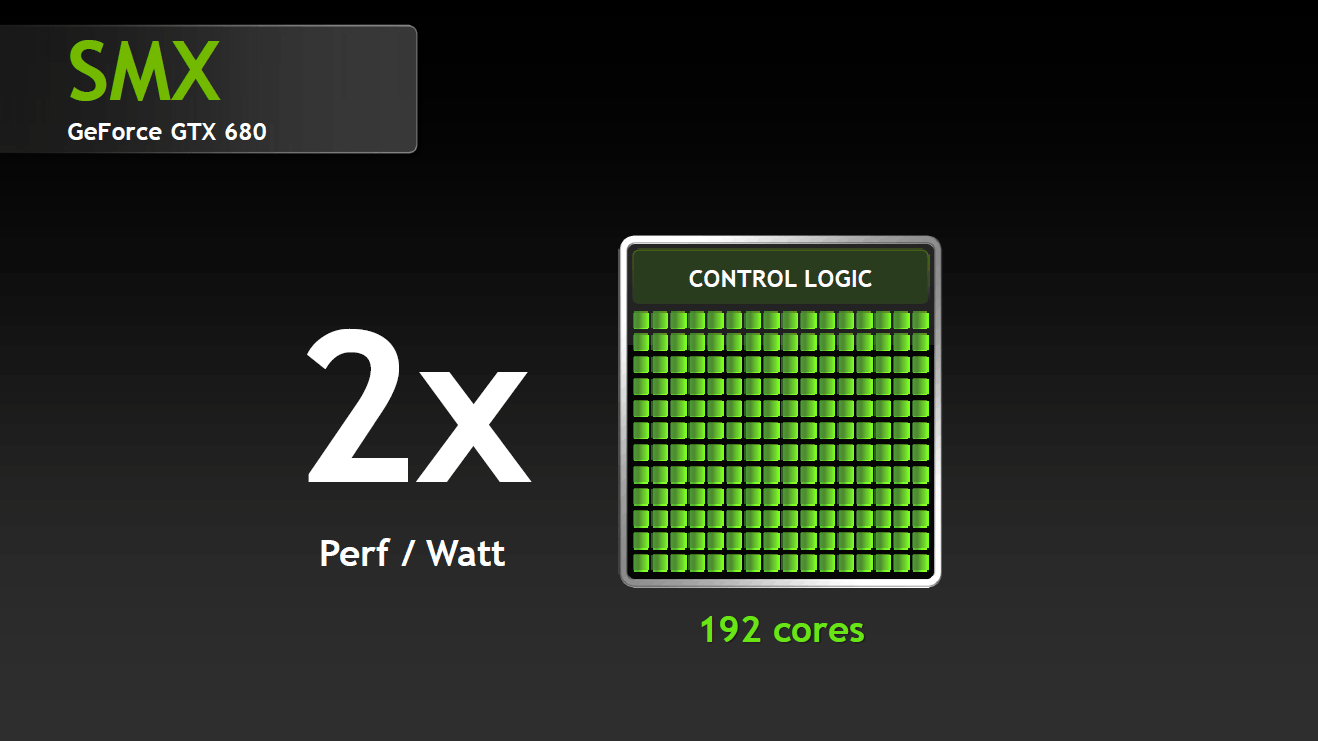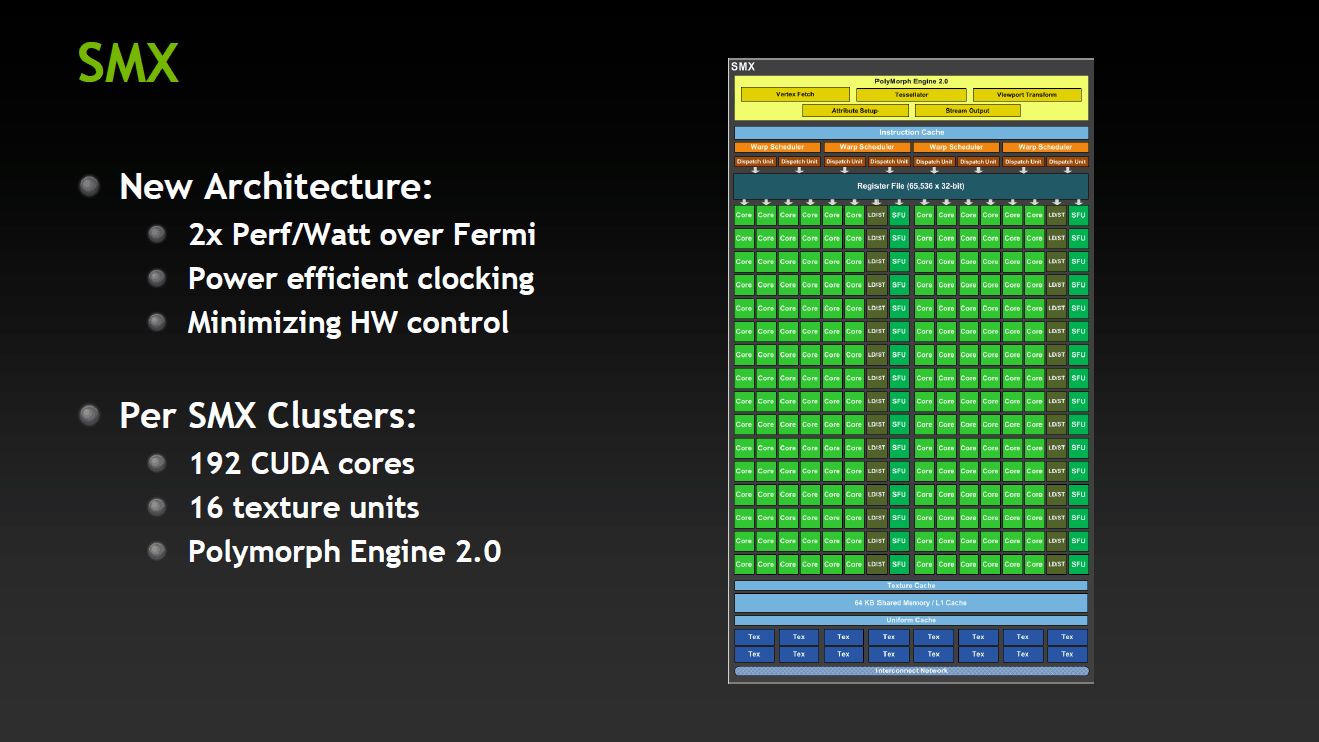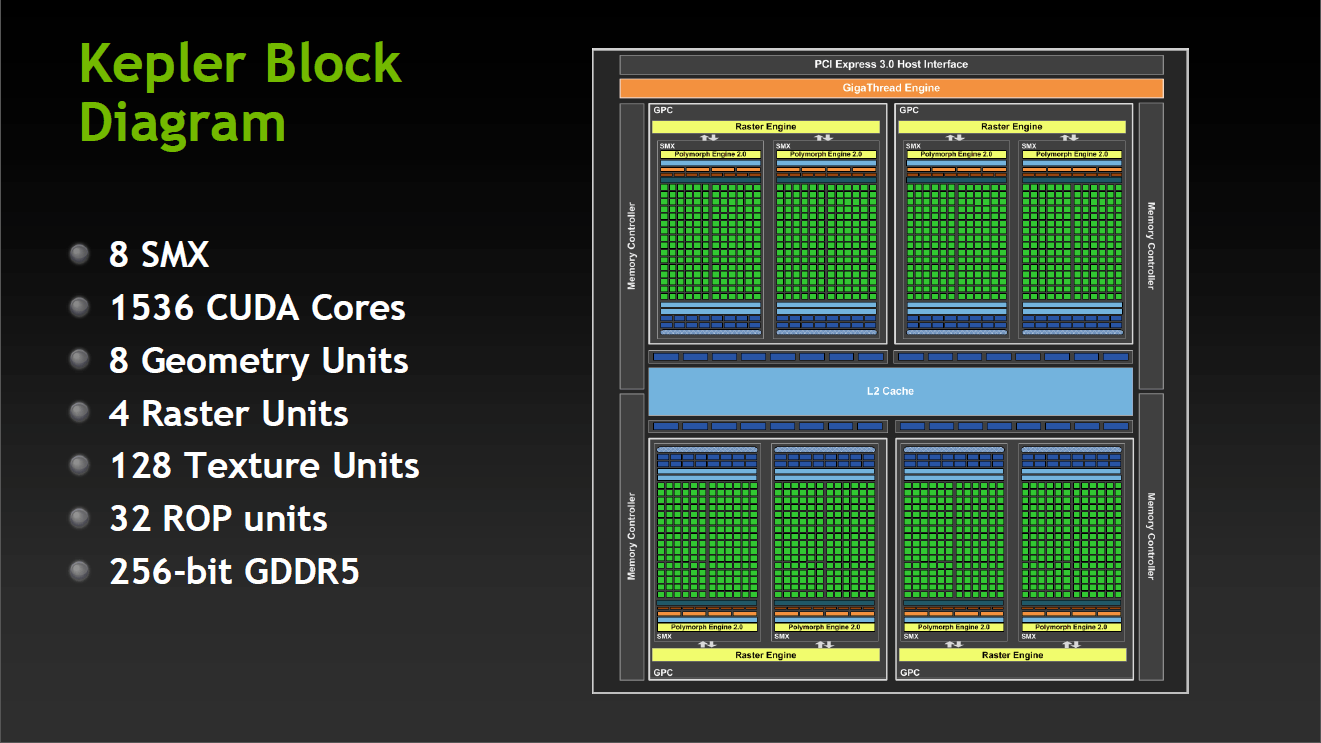It has been a while since we've had an NVIDIA card in-house for testing. Our last set of cards was a few generations back, with the GTX 275 and GTX 295 (a card I really liked). Since then we've made due with benchmarking and reviewing products solely from the AMD camp. While we've been glad to bring you the information we could, we were limited to just comparing cards within the current AMD product stack, or comparing comprable cards between generations.
Thanks to some contact made at the Rezzed Game Show in the UK, and some serious leg work by Delphium, we were able to get our hands on a current NVIDIA card - the GTX 670. I'm really glad to have an NVIDIA card back in-house, and I'm looking forward to doing a real comparison between the red and green camps.
The 600-series is really the perfect time to do an apples-to-apples (red apple vs. green apple, as it were) comparison between the two competitors. The NVIDIA 500-series brought multi-monitor gaming to NVIDIA hardware, but it required an SLI configuration. This was both problematic from a cost and implementation standpoint (some games just don't like a multi-GPU configuration).
While we could have done a solid set of single screen comparisons, there really just wasn't any way for us to do an effective multi-monitor analysis. The 600-series now gives us NVIDIA Surround on a single card, and opens things up for a proper WSGF shoot-out.
Check out this YouTube video to see the NVIDIA Surround setup routine.

Architecture
NVIDIA introduced us to the Fermi architecture with the 400-series. It delivered strong performance at the expense of power draw, noise and heat. They refined Fermi with the 500-series into a more efficient and "better behaved" product, while producing better performance over the first iteration. Overall the architecture was built around fewer CUDA cores (shader processors), running at a high frequency.
NVIDIA has taken a solid shift with the Kepler architecture in the 600-series. They dramatically increase the number of CUDA cores, while cutting the shader clock rate. In the 500-series the shader ran at double the clock rate of the core, with the memory then having its own clock. With the Kepler architecture, the core clock and shader clock are now the same, with the memory running at its own speed. This brings NVIDIA in line with AMD on their general architecture outlook - massive number of shaders working parallel, with a unified core and shader clock.




Reference Specifications
The GTX 670 is targeted at the high end of the market, and is NVIDIA's counterpoint to the AMD Radeon HD 7950. In our testing we will be comparing the NVIDIA GTX 670 to both the Radeon HD 7970 and the Radeon HD 7950.
The specific card we are testing is not a reference card, but a retail SKU from MSI. It is an overclocked version, with the model number of N670GTX-PM2D2GD5/OC. It carries a base clock of 965HMz and an average boost clock of 1045MHz. Being an OC'd card, it will perform a bit better than the base reference design. However, looking at Newegg the card only carries a $10 premium and was actually on sale for the MSRP of $399. Considering you can get OC performance for reference pricing, I believe it's fair to pit this model against the AMD reference designs.
| Card |
GPUs |
Transistors |
Mem/Bus |
Shaders | Clock (MHz) | | TDP (Watts)* | Power | MSRP |
| Core | Boost | Mem | Idle | Max |
| AMD Radeon HD 7970 | 1 | 4.3B | 3GB / 384-bit | 2,048 | 925 | --- | 1375 | | <3 | 250* | 8+6-pin | $429 |
| NVIDIA GeForce GTX 670 | 1 | 3.54B | 2GB / 256-bit | 1,344 | 915 | 980/1084 | 6000 | | ??? | 170 | 6+6-pin | $399 |
| AMD Radeon HD 7950 | 1 | 4.3B | 3GB / 384-bit | 1,792 | 800 | --- | 1250 | | <3 | 200* | 6+6-pin | $349 |
| *The Radeon values represent the maximum wattage allowed through the AMD PowerTune. Idle for the Radeon cards is based on a "long idle" scenario. |





